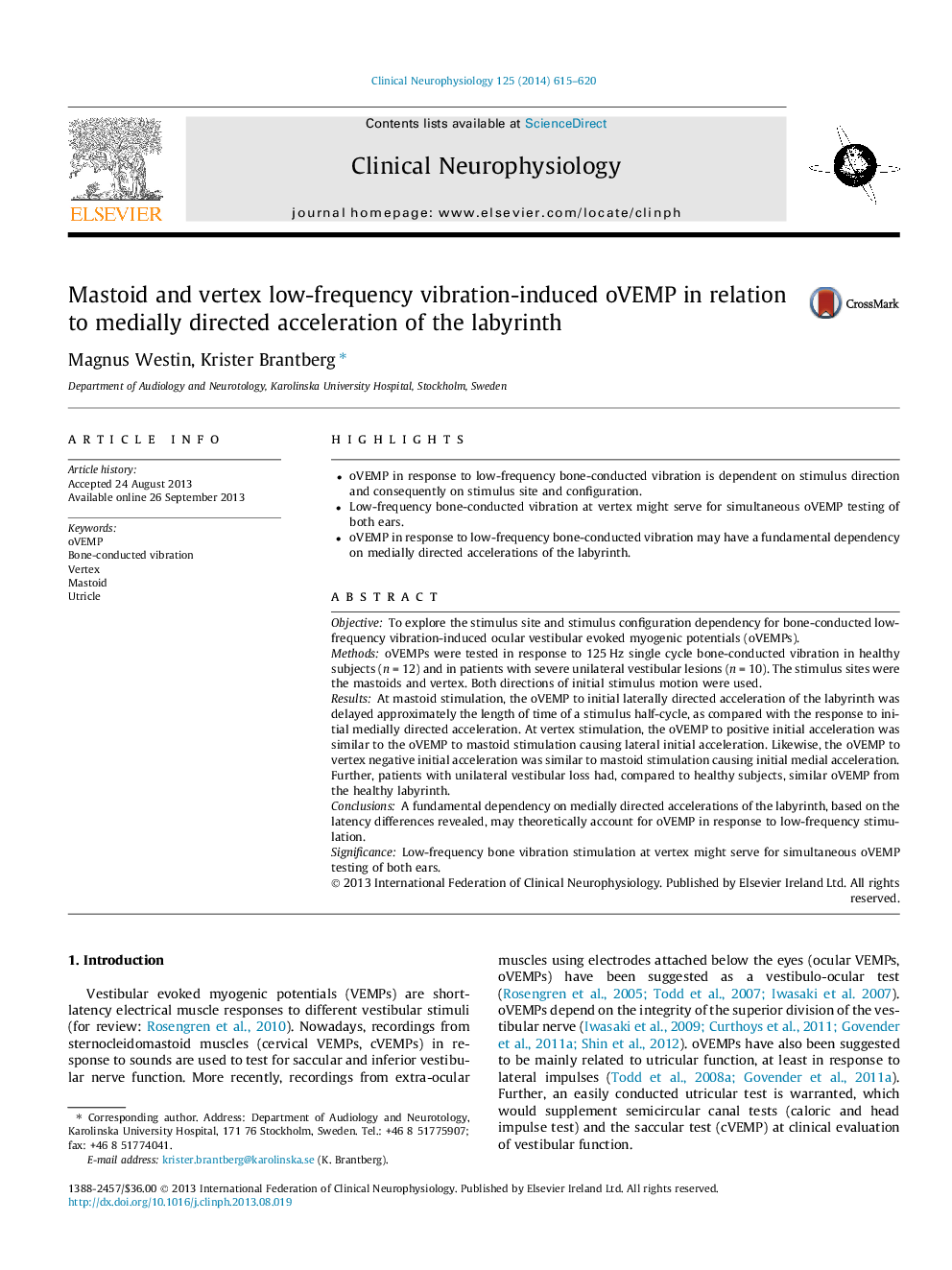| Article ID | Journal | Published Year | Pages | File Type |
|---|---|---|---|---|
| 3043953 | Clinical Neurophysiology | 2014 | 6 Pages |
•oVEMP in response to low-frequency bone-conducted vibration is dependent on stimulus direction and consequently on stimulus site and configuration.•Low-frequency bone-conducted vibration at vertex might serve for simultaneous oVEMP testing of both ears.•oVEMP in response to low-frequency bone-conducted vibration may have a fundamental dependency on medially directed accelerations of the labyrinth.
ObjectiveTo explore the stimulus site and stimulus configuration dependency for bone-conducted low-frequency vibration-induced ocular vestibular evoked myogenic potentials (oVEMPs).MethodsoVEMPs were tested in response to 125 Hz single cycle bone-conducted vibration in healthy subjects (n = 12) and in patients with severe unilateral vestibular lesions (n = 10). The stimulus sites were the mastoids and vertex. Both directions of initial stimulus motion were used.ResultsAt mastoid stimulation, the oVEMP to initial laterally directed acceleration of the labyrinth was delayed approximately the length of time of a stimulus half-cycle, as compared with the response to initial medially directed acceleration. At vertex stimulation, the oVEMP to positive initial acceleration was similar to the oVEMP to mastoid stimulation causing lateral initial acceleration. Likewise, the oVEMP to vertex negative initial acceleration was similar to mastoid stimulation causing initial medial acceleration. Further, patients with unilateral vestibular loss had, compared to healthy subjects, similar oVEMP from the healthy labyrinth.ConclusionsA fundamental dependency on medially directed accelerations of the labyrinth, based on the latency differences revealed, may theoretically account for oVEMP in response to low-frequency stimulation.SignificanceLow-frequency bone vibration stimulation at vertex might serve for simultaneous oVEMP testing of both ears.
